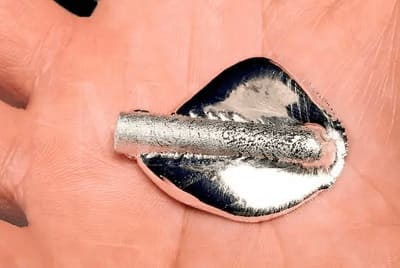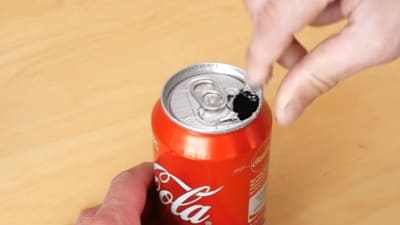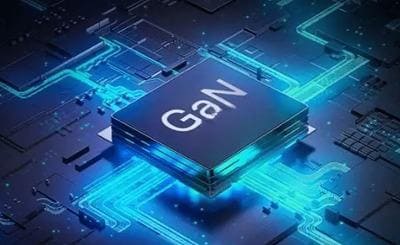Gallium is a fascinating element discovered by the French chemist Paul Émile Lecoq de Boisbaudran in 1875. This soft, silvery metal has the unique property of having the largest liquid range of any element, melting at just above room temperature and boiling at high temperatures, making it useful in high-temperature thermometers. Solid gallium is also known for its ability to wet glass and porcelain, which is quite unusual for a metal.The periodic table holds secrets that surpass human history and reflect the universe itself, with each element having its own unique creation story. Today, we focus on metallic gallium, an extraordinary element.
What kind of element is gallium metal?
Gallium metal is located in group IIIA of the fourth cycle, the same group as the metal aluminum. But gallium is very rare.
It is liquid at room temperature. This is because the melting point of gallium metal is particularly low, less than 30 degrees Celsius, and it is liquid whenever the ambient temperature is too high. However, it has a very high boiling point, and to make it boil it must reach 2,400 degrees.
Unlike most metals, metallic gallium contracts when heated and expands when cooled. This unusual behavior is due to its low melting point, causing it to solidify below 30 degrees Celsius, resulting in a decrease in density and an increase in volume. As a result, a fascinating phenomenon occurs with metallic gallium - even when exposed to cold temperatures and touched with bare hands, it will turn into a liquid droplet in the palm of one's hand.
While metallic gallium is not edible, it can be touched directly by humans. Ingesting gallium-containing substances has caused poisoning symptoms in mice during experiments. Accidental consumption is not a significant concern as fatal effects would require ingesting over 750 milligrams, and the amount of gallium encountered in everyday life is typically too small to be harmful.
Gallium can be produced by electrolysis of a solution of gallium hydroxide in potassium hydroxide. This process highlights the element's reactivity and versatility. The discovery of gallium by Émile Lecoq de Boisbaudran was a significant milestone in chemistry, demonstrating the predictive power of Mendeleev's periodic table and expanding our understanding of the elements.
What happens when gallium metal touches other substances?

The cans in our lives are made of aluminum, which will be corroded by acid, but aluminum will also be "corroded" by gallium, a metal of its own family.
Liquid gallium metal drops on the cans, not long, the contact part will become soft, with a finger can be pierced, the average person can practice "a finger of magic".

It's not just aluminum, drop it on steel, iron, aluminum, antimony, copper, and other metals and the same thing happens.
This is not to say that gallium metal in liquid form is corrosive, or else one's hand would be nothing the moment one touched it.
The reason is that gallium metal belongs to the same family as aluminum, and its surface will be oxidized to form oxides, which are amphoteric oxides and therefore can react with metals.
Gallium metal not only "disintegrates" metals, but non-metals as well. It can infiltrate glass, so gallium metal cannot be stored in glass bottles.
Moreover, gallium metal is easily hydrolyzed, so it should be placed in a way that protects it from moisture.
So gallium metal can neither be stored in metal containers nor in glass bottles, it can only be placed in plastic containers in a dry environment, with desiccants placed if necessary.
What happens when gallium metal meets acid?
Organic materials are notorious for being stuck by sulfuric acid, and most metals react with it to form hydrogen gas, which can explode when exposed to fire.
But gallium metal is relatively gentle, drop it into the sulfuric acid, and it will turn into a ball, and the surface of the bubbles rises, this is because it and acid react to generate hydrogen.
At this time there is nothing special, but reaching into a wire near the gallium metal droplets, a magical scene appeared, droplets of gallium metal state, suddenly high up, bouncing on the spot.
This is because reaching into the wire is equivalent to stirring the sulfuric acid, allowing the hydrogen ions inside to increase their contact with the metallic gallium.
In addition, gallium metal can also react with halogen elements to become a semiconductor material, with a value of doubled.
In addition to reacting with acids, gallium metal can also react with bases, because in the same vein as aluminum, it has acid-base amphoteric, and in the world of chemistry, it is the acid-base master.
What applications do humans have for the gallium element?
The discovery of gallium metal was so dramatic that it was theorized to exist before it was proven to exist.
- Gallium metal is involved in the reaction to obtain gallium nitride which is an excellent semiconductor material.
- Pure gallium and low-melting alloys can be used as a heat exchange medium in nuclear reactions, replacing mercury as a filler in thermometers to avoid mercury poisoning.
- In addition, it can also be used as a catalyst for di-esterification in organic reactions.
- In medicine, gallium metal is extremely isotopic in treating malignant tumors, that is, we often say cancer.

As a result, the scarce content and price of gallium metal have kept the industry related to gallium metal in a relatively primitive state. Future research on gallium metal will continue, but the problem of its low content cannot be overcome. But the discovery of gallium metal is already remarkable for mankind.
One of the significant applications of gallium is in the production of light-emitting diodes (LEDs) and semiconductors. Gallium arsenide (GaAs) is a compound used extensively in electronics due to its efficient light emission and high electron mobility. This makes it a critical material in the manufacturing of LEDs, solar cells, and high-speed electronics. The Russian chemist Dmitri Mendeleev had even predicted the existence and properties of gallium before its discovery, showcasing the power of his periodic table.
Heeger Materials is a reputable supplier offering top-notch gallium (Ga) and semiconductor materials products at competitive prices. They are widely used in semiconductor industries and other fields. If you're interested, feel free to reach out to us at [email protected] for a quote, and we guarantee a response within 24 hours.


